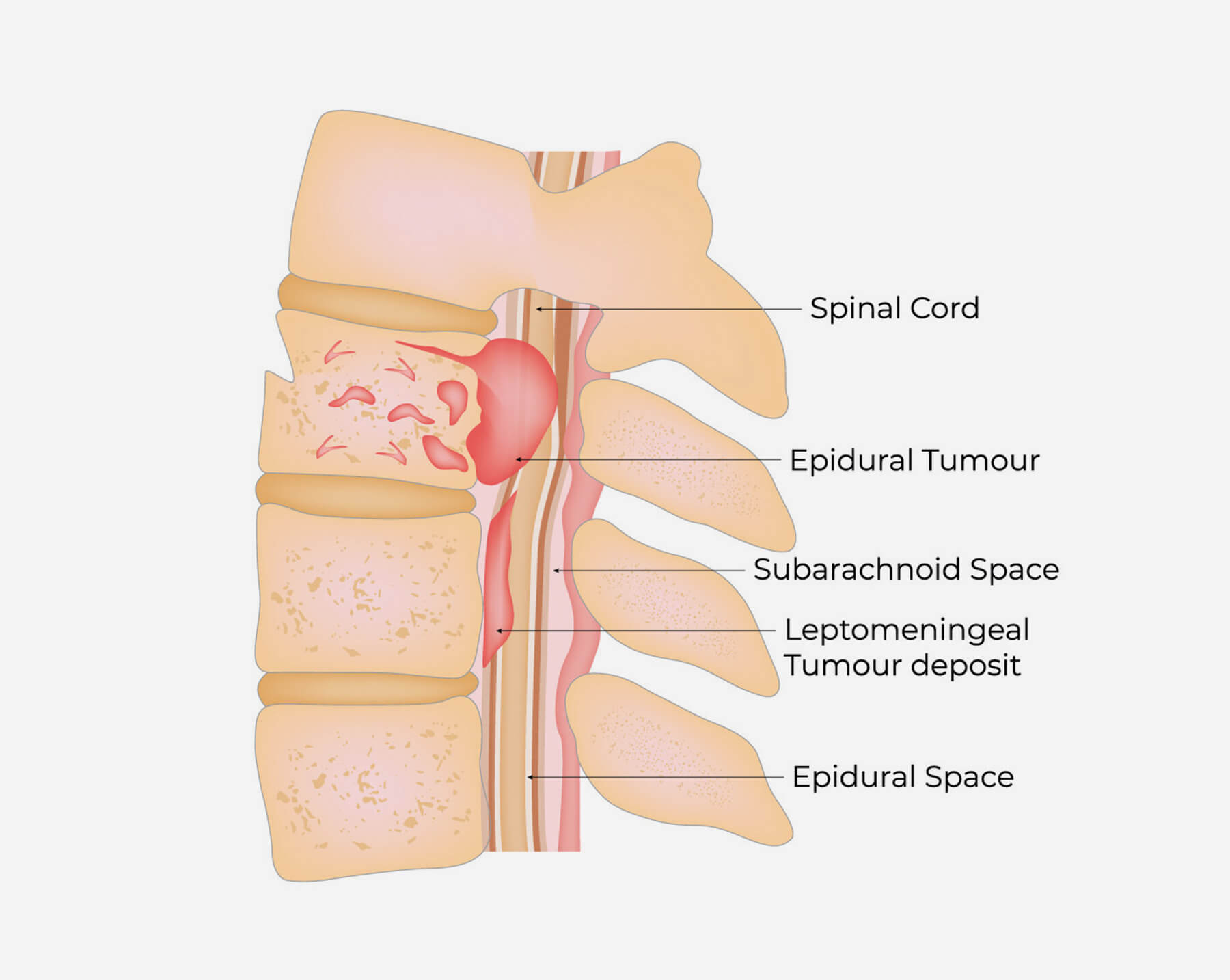

Our ServicesThoracic Spine Tumours
The spine is a complex and vital structure, housing the spinal cord and providing support for the entire body. Tumours in the spine-especially in the thoracic region (the middle portion of the spine)-can significantly impact a patient’s neurological function and quality of life. Though relatively rare, thoracic spine tumours require timely diagnosis and treatment to prevent permanent damage.

What Are Thoracic Spine Tumours?

Thoracic spine tumours are abnormal growths that develop within or near the thoracic portion of the spinal column, which spans from the base of the neck to the bottom of the rib cage. These tumours can be:
- Primary: Originating in the spine or spinal cord.
- Secondary (Metastatic): Spreading from other parts of the body (such as the breast, lung, or prostate).

They can also be classified by location:
- Extradural: Outside the dura mater (most common, usually metastatic).
- Intradural-Extramedullary: Inside the dura but outside the spinal cord.
- Intramedullary: Inside the spinal cord itself (least common).
When conservative  care needs
care needs
a specialist’s touch.
touch.
Common SymptomsSymptoms depend on the tumour’s location, size, and rate of growth. In the thoracic spine, these may include:
Mid-back pain, often worse at night
Numbness or tingling in the torso or lower limbs
Muscle weakness, particularly in the legs
Balance problems
Bowel or bladder dysfunction
Progressive paralysis, if left untreated
When to Seek Medical Attention
Persistent, unexplained back pain-especially if it's not linked to activity or is accompanied by neurological symptoms-warrants medical evaluation. Early diagnosis can prevent irreversible damage.
Diagnostic Approach
A thorough assessment involves:01.
Clinical Evaluation
Neurological examination to check motor strength, reflexes, and sensory function.

Thoracic Spine TumoursTreatment Options
Treatment depends on the type, size, location, and origin (benign vs. malignant) of the tumour.
1. Surgery
Often necessary for decompression, tumour removal, or stabilization of the spine. Advanced microsurgical and minimally invasive techniques are now commonly used.
2. Radiation Therapy
Used either post-surgery or as the primary treatment for inoperable or metastatic tumours.
3. Chemotherapy
Primarily for metastatic or systemic cancers.
4. Steroids
May be administered to reduce inflammation and relieve pressure on the spinal cord.
5. Rehabilitation
Post-treatment physical therapy helps in recovery of mobility, strength, and quality of life.
PrognosisPrognosis depends on:
Whether the tumour is benign or malignant
The degree of spinal cord compression
Timeliness of treatment
Early intervention often leads to significantly better outcomes.
Final Thoughts
Thoracic spine tumours, though uncommon, pose serious risks if left untreated. Awareness of symptoms, early diagnosis, and a multidisciplinary approach to treatment are essential to preserving function and improving outcomes. If you or someone you know is experiencing unexplained back pain or neurological changes, consult a spine specialist promptly.

